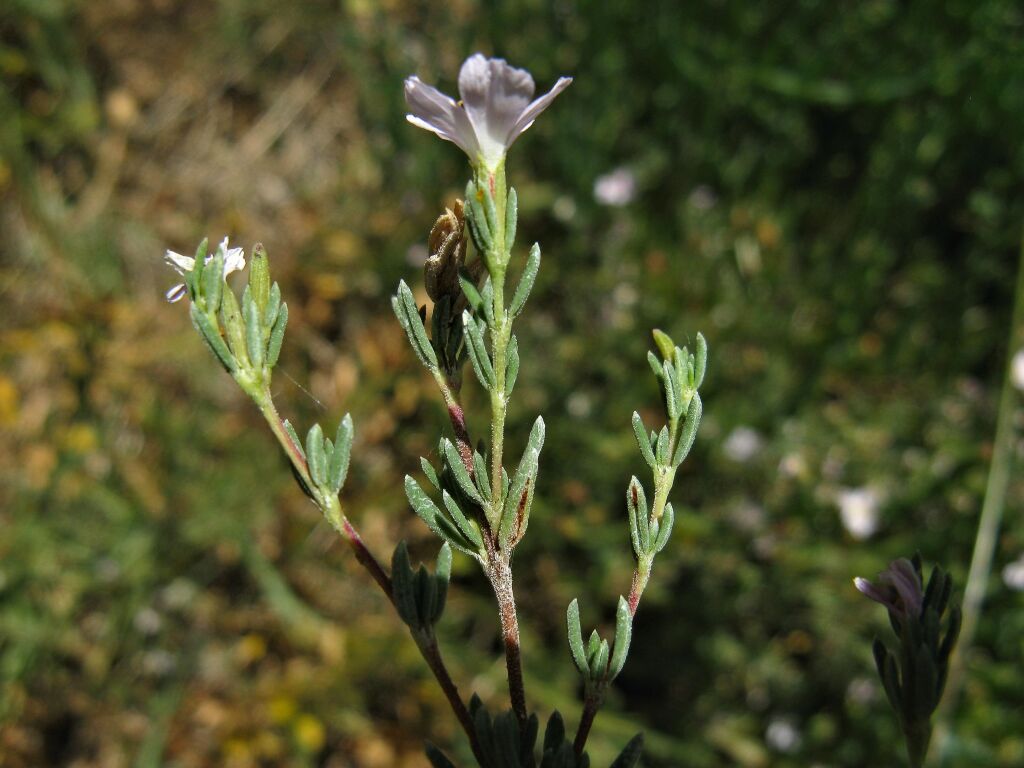Frankenia pauciflora var. gunnii
Summerh. Southern Sea-heathLow, sprawling to erect shrub; branches sparsely to densely covered in minute, spreading, sometimes uncinate hairs c. 0.1–0.2 mm long, or glabrous; internodes 2–24 mm long. Leaves on long-shoot 3–9 mm long; petiole 0.5–2.1 mm long, tapered distally where 0.3–0.8 mm wide, ciliate; leaf-blade elliptic, oblong, obovate or ovate, 0.8–2.2 mm wide, coriaceous; margins loosely to tightly revolute; midrib inconspicuous to somewhat raised on lower surface (not broad, flat or prominent); surfaces greyish yellow-green, glabrous or with scattered minute hairs; short-shoot leaves similar. Flowers solitary or 2–25 in terminal or axillary dichasia. Calyx 5(rarely 4)-lobed, 4–8 mm long, 1–2 mm wide, partly or wholly hairy; petals (4–)5, 6–11 mm long; stamens 6; style-branches (2–)3(–4); ovules 6–18. Flowers most of the year.
Wim, VVP, GipP, OtP, EGU, WPro, Strz. Also SA, Tas. Generally restricted to coastal saltmarsh, extending further inland only in western Victoria where known from scattered localities south of Horsham (early reports from further north, e.g. the Pink Lakes area, have been redetermined as F. serpyllifolia).
Var. gunnii is distinguished from var. fruticulosa (DC.) Summerh. (including var. strichosticha), which grows in Western Australia and South Australia, in having usually more elongate leaves with a narrow, usually inconspicuous midrib (cf. the broad, prominent midrib of var. fruticulosa). Var. longifolia, reported from the same two states, is of uncertain application but probably synonymous with either var. fruticulosa of var. gunnii (Whalen 1986). The type variety from Western Australia is characterized by its high ovule numbers: 15–45 reported by Barnsley (1982).
Entwisle, T.J. (1996). Frankeniaceae. In: Walsh, N.G.; Entwisle, T.J., Flora of Victoria Vol. 3, Dicotyledons Winteraceae to Myrtaceae, pp. 372–376. Inkata Press, Melbourne.
 Spinning
SpinningBarnsley, B. (1982). 'Frankeniaceae' in A.S. George (ed.). Flora of Australia 8: 112–144.
Whalen, M.A. (1986). 'Frankeniaceae' in J.P. Jessop & H.R. Toelken (eds). Flora of South Australia 2: 873–881.


